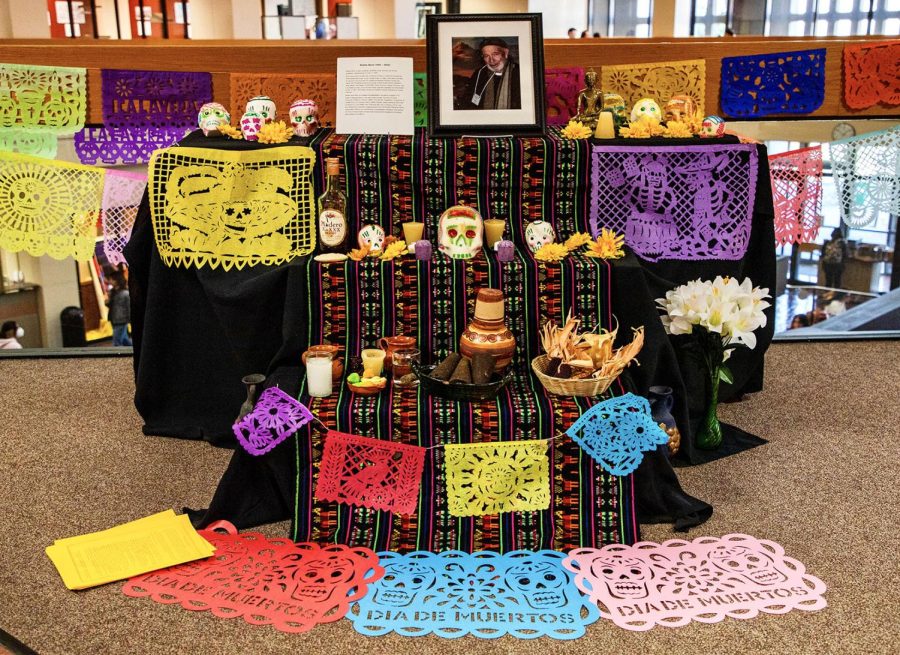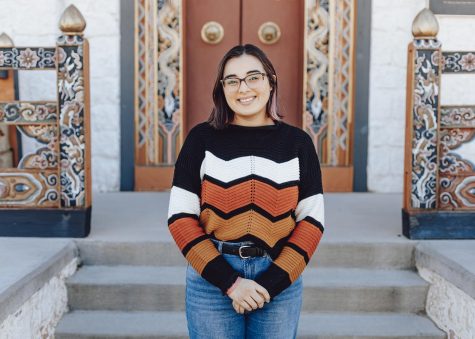The UTEP library makes an altar, or an ofrenda, for the dead every year and dedicate it to someone prominent at the university, as well as for the writing and art community. This year’s altar was erected Thursday, Oct. 27 and was dedicated to the late Bobby Byrd of Cinco Puntos Press.
The library has done this for at least the last 20 years. This building was ideal because of the location for the exhibits committee as well as the archives of books and art held there.
According to Claudia Rivers, head of the Special Collections Department, with each display they try to honor a local author to highlight the work of the border and educate students on Día De Los Muertos as well.
“This year, we’re honoring Bobby Byrd, who was, with his wife Lee, one of the owners of the Cinco Puntos Press here in town,” Rivers said. “They were a really important publisher. And actually, nationally important, because they are one of the biggest publishers of bilingual children’s books.”
Byrd was born in 1942 and he and his wife founded Cinco Puntos in 1985. He is also author of many books such as “The Price of Doing Business in Mexico: Poems,” “White Panties, Dead Friends, and Other Bits and Pieces of Love,” “Otherwise My Life is Ordinary” and “Puro Border: Dispatches, Snapshots, and Graffiti from La Frontera.” His press’ books have been awarded the Southwest Book Award from the Border Regional Library Association. Byrd passed away on July 11.
Día de los Muertos, or Day of the Dead, is a Mexican holiday that is a combination of Latin culture and the catholic religion that came with colonization, according to history.com.
The day is celebrated by families visiting their deceased loved ones on the first two days of November. Families also create these altars, providing necessities for the souls of their loved ones for traveling, according to the Mexican Student Association. When a person dies, it is believed that they depart to Chicunamictlán, Land of the Dead, history.com reports.
According to Rivers, items that are often put on an altar consist of favorite beverages and foods, sugar skulls, along with a glass of water with a stone in it and marigolds. Another thing is a picture of the individual that the family wants to remember.
“We thought that it was a good way to bring attention to writers and artists, and other people who are intellectual leaders when they had died recently,” Rivers said. “Also, it kind of carries on the Latin American tradition.”
Kristen Scheaffer is a contributor and can be reached at [email protected].













